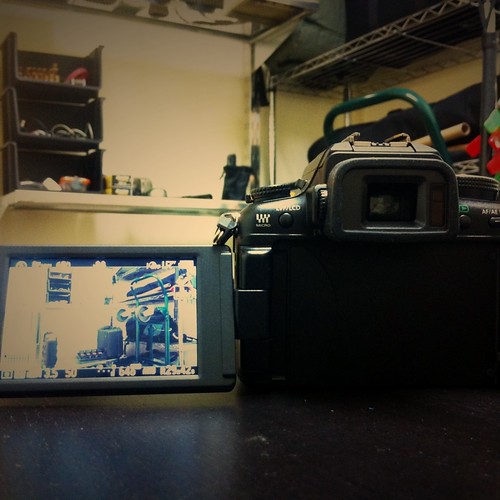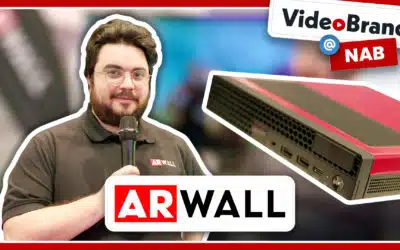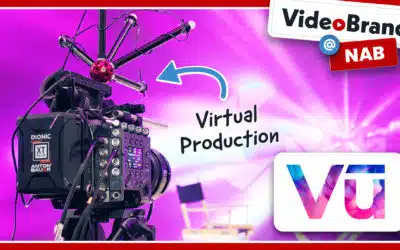A DSLR that doesn’t overheat, doesn’t have a recording limit, shoots the gamut of HD frame rates, autofocuses while filming, and is less than $900…does it exist?! Yes.
The Backstory
I’ve been sitting on the sidelines for the past few years during the DSLR battles. For my needs in documentary work, there seemed to be so many limitations with DSLRS (specifically the most popular brand, Canon) that having shallow depth of field wasn’t worth the tradeoff for no audio, short recording times, overheating, and lots of additional support gear needed.
I’ve had my Sony EX1 for nearly three years and I still love it. The only DSLR experience I’ve had was with Andrew’s cameras, and they weren’t positive. First he got a Canon T2i and that was a flaming turd. It would constantly overhead and shutdown. Recently he upgraded to a 7D. While it doesn’t overheat and is a really good overall camera for stills and video, it still has a lot of limitations, especially during interviews.
We just did a project where I used my EX1 as the main camera for the interview, and as the main source for sound. The 7D was a secondary camera. The EX1 can roll forever without needing to stop. The 7D would keep reaching it’s 12 minute recording limit and then you’d get an obnoxious shutter clicking sound right in the middle of the interview.
However, besides shallow depth of field, the other thing DSLRs have going for them is they are very discrete. I walk in a room and start filming with my EX1, everyone thinks it’s a big production and knows I’m filming. Which is usually fine, especially with client work.
But I’m about to embark on a project where I don’t want attention called to my filming, and a DSLR is perfect for that.
So now I was in the market for one. While obviously the 7D and T3i are cheaper, it didn’t make sense to save some money if the camera wouldn’t meet my demands. I was thinking about going for the long standing king of the DSLRs, the Canon 5D MK II, especially since they’ve lowered the price to under $2,000 with a bunch of extras to sweeten the deal for Christmas promos.
By chance I was reading a Filmmaker Mag blog post from doc maker Jared Flesher. He talked about shooting his movies with a Panasonic GH2 and its lack of issues you find in the Canon cameras. I was intrigued.
The Panasonic GH2
Technically the GH2 is not a DSLR, because it doesn’t have the flipping mirror that reflects the image to the viewfinder. But for video that doesn’t matter, because in video mode on all the cameras the mirror is permanently flipped up anyways. The GH2 is a Micro Four-Thirds camera.
The GH2:
- Has no recording limit.
- Has very little reports of overheating.
- Can shoot just about every major frame rate.
- Not only can you autofocus (with specific Panasonic lenses, of course) while filming, but you can touch the screen to tell the camera where to focus to. Built in AC!
- Built in mic is surprisingly good, and there some minimal level controls.
- Flip out monitor.
- No moire.
- Free hacks available.
- Being a Micro Four-Thirds camera, there are a wide range of adapters available to take just about any lens.
- Also, as a Micro Four-Thirds camera, the viewfinder is a video screen, which means you can use it while filming since a mirror isn’t blocking it.
The best part – the camera with a kit lens is available on Amazon for less than $900. How come no one talks about this camera!?
It didn’t take me long to order this beast.
First Thoughts
Holding the camera for the first time, it initially felt like a toy. It’s light and has a plastic body. It was way more in line with the T2i than the beefiness of the 5D or 7D. Plus, the Micro Four-Thirds mount is small. Smaller than I expected.
But in the end that doesn’t really matter. I like the small size – I can palm the whole thing in my hand, or easily throw it in my bag.
I had to upgrade the firmware in order to get the 1080P 30 fps settings. But once upgraded everything has been working great.
Autofocus works as promised, along with the touchscreen focusing. But it’s autofocus, not an AC replacement, though useful for run-and-gun.
The f-stop on the kit lens is obviously not great, so for about $25 I picked up a Nikon adapter. This is where the camera has truly shined.
I know I said I didn’t buy it for the shallow focus, but it looks so damn good! Using my 24mm 2.8 and 50mm 1.8, the depth of field has been amazing.
Plus, the ISO noise level has been truly amazing. While expectedly noisy at high levels, so far I’ve found the noise to be acceptable, while the noise on the 7D is atrocious and unusable.
I also forgot to stop filming once, but fortunately this proved that there is no recording length or overheating issue.
The camera is quick to boot, you can keep it in movie mode so you don’t have to switch modes every time you start up, and the battery lasts a long time, even while filming a lot.
I did buy the GH2 Shooter’s Guide eBook from EOSHD. It’s a book specifically written on how to get the most from the GH2 for filmmaking. While I think the $30 is a little high for the book, I’m glad someone took the time to write it. It goes beyond just what menu settings to use and includes gear and lens recommendations. Though with some time you could probably figure out everything in the book through Google searches and just looking at EOSHD.com archives.
Drawbacks
So far the only drawback I’ve found is the file format it records to, AVCHD. While I wouldn’t natively edit Canon QuickTimes, at least there’s a file I can quickly preview in Finder.
The AVCHD files are buried in the most bizarre file structure on the SD card. The only way you can play them natively on a Mac is with VLC. Or you can edit them natively with Adobe Premiere.
For Final Cut 7, you can encode them with Log and Transfer. But this only gives you the option to encode to ProRes. I like to keep everything in XDCAM codec, because it’ll probably be mixed with XDCAM footage anyways and it takes less space than ProRes.
So to encode straight from AVCHD to XDCAM I have to use Adobe Media Encoder.
Slight annoyance but something that’d have to be done no matter what DSLR I’m using.
Bottom line – this camera is amazing. Panasonic seriously needs to up their marketing and make this Lumix line of cameras seem more professional. When I tell people I have a GH2 it doesn’t hold the same cache as saying I have a Canon 5D.
Panasonic has a sub $1000 camera that holds its own against bigger DSLRs but is talked about very little. I hope that changes.





